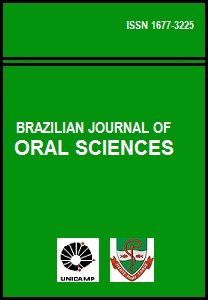Abstract
Oral soft tissues are affected by a multitude of pathologic conditions of variable etiology and significance, appropriate management of which relies on their accurate diagnosis. Considerable overlapping of signs and symptoms produced by diverse conditions poses significant problems for their diagnosis, which can be resolved only through a thorough knowledge of the clinicopathologic characteristics of each condition and a systematic approach to diagnosis. An essential component of the diagnostic process is the formulation of a differential diagnosis, which encompasses the possible diseases and conditions that could account for a specific constellation of oral signs and symptoms. To facilitate the challenging task of differential diagnosis, this review provides comprehensive lists of the various pathologic conditions that pertain to specific oral soft tissue changes. The latter are classified into three major categories: 1) changes in color, 2) surface alterations, and 3) masses or swellings. The first part of this review offers some general considerations for the differential diagnosis of oral mucosal and submucosal lesions and presents the range of pathologic conditions that result in color alterations of oral soft tissues. Lesions producing color changes of oral tissues are classified into 1) white, 2) red, 3) white and red, 4) yellow, and 5) pigmented, and are further subdivided on the basis of their etiology, pathogenesis, or tissue of origin. The fundamental characteristics of each disease category are discussed and correlated with the optimal diagnostic approaches and tests that will secure a definitive diagnosis.References
Cawson RA, Binnie WH, Barrett AW, Wright JM. Oral Diseases. 3rd ed. Saint Louis: Mosby; 2001.
Cawson RA, Odell EW. Cawson’s Essentials of Oral Pathology and Oral Medicine. 7th ed. Edinburgh: Churchill Livingstone; 2002.
Eversole RA. Clinical outline of oral pathology. 3rd ed. Philadelphia: Lea and Febiger; 1992.
Greenberg MA, Glick M. Burket’s Oral Medicine: Diagnosis and Treatment. 10th ed. Hamilton: BC Decker Inc; 2003.
Neville B, Damm DD, Allen CM, Bouquot JE. Oral and Maxillofacial Pathology. 2nd ed. Philadelphia: WB Saunders; 2002.
Newland JR, Meiller TF, Wynn RL, Crossley HL. 2nd ed. Hudson: Lexi-Comp, Inc; 2002.
Regezi JA, Sciubba JJ, Jordan RC. Oral Pathology. Clinical Pathologic Correlations. 4th ed. Philadelphia: WB Saunders; 2003.
Scully C. Handbook of Oral Disease. Diagnosis and Management. 2nd ed. London: Martin Dunitz Ltd; 2001.
Scully C, Cawson RA. Oral Disease. 2nd ed. Edinburgh: Churchill Livingstone; 1999.
Silverman S, Eversole LR, Truelove EL. Essentials of Oral Medicine. Hamilton: BC Decker Inc; 2002.
Wood NK, Goaz PW. Differential Diagnosis of Oral and Maxillofacial Lesions. 5th ed. St. Louis: Mosby; 1997.
The Brazilian Journal of Oral Sciences uses the Creative Commons license (CC), thus preserving the integrity of the articles in an open access environment.

